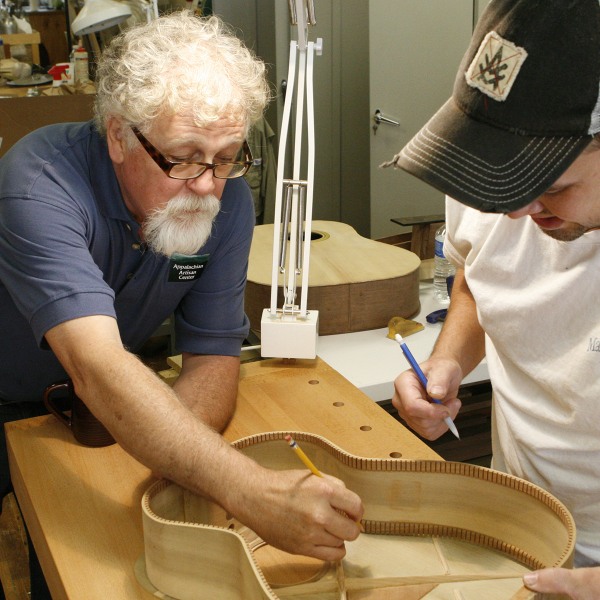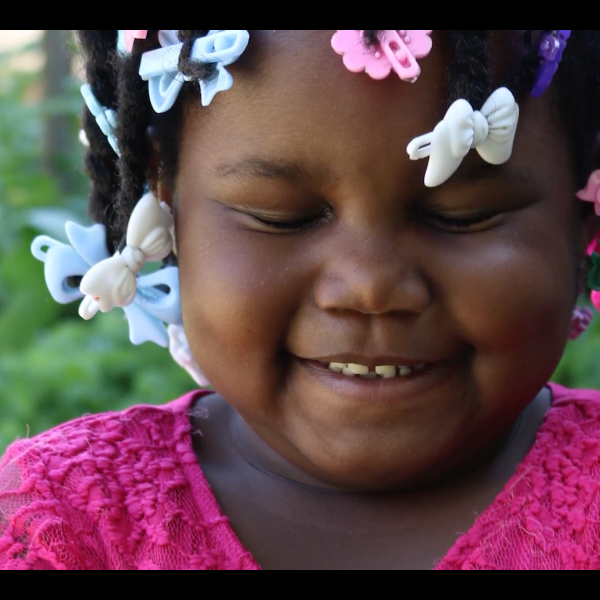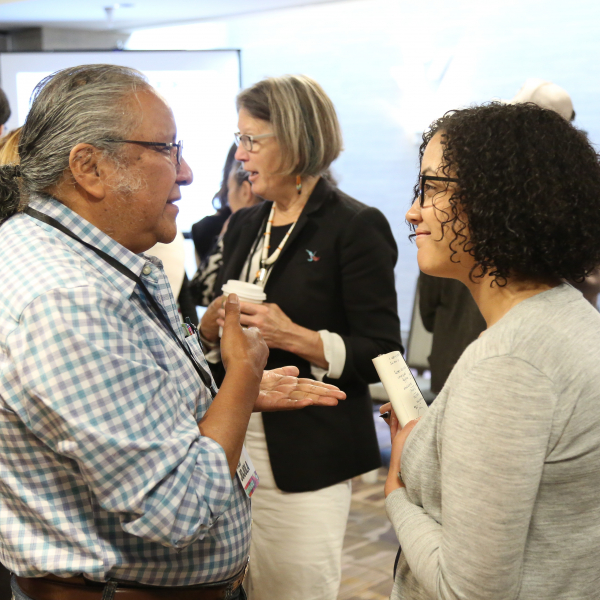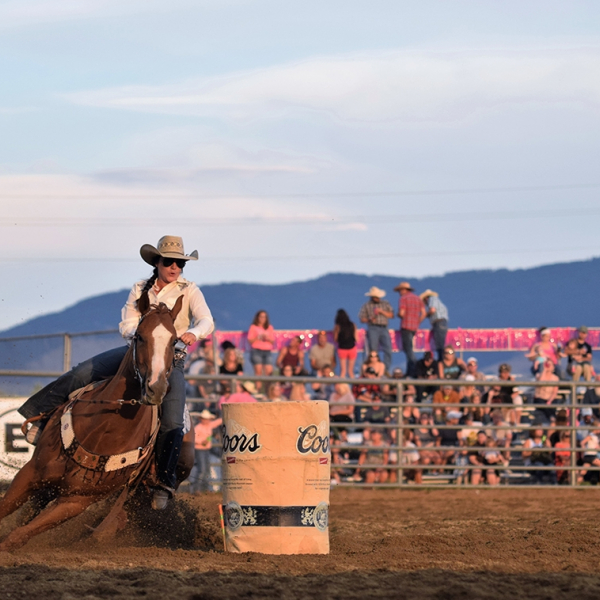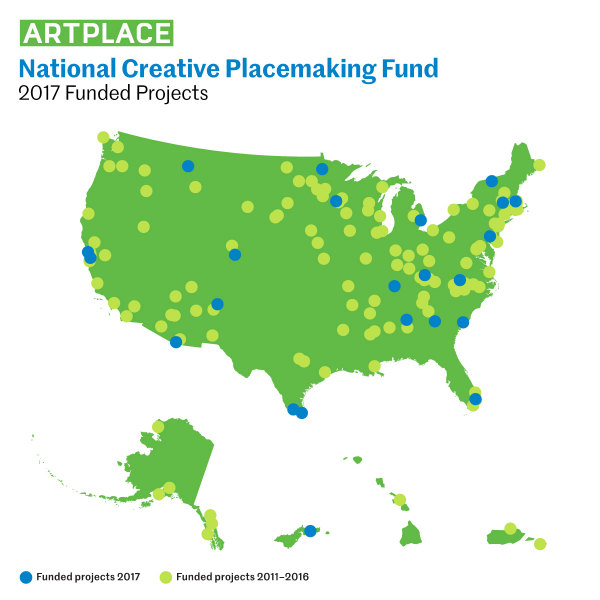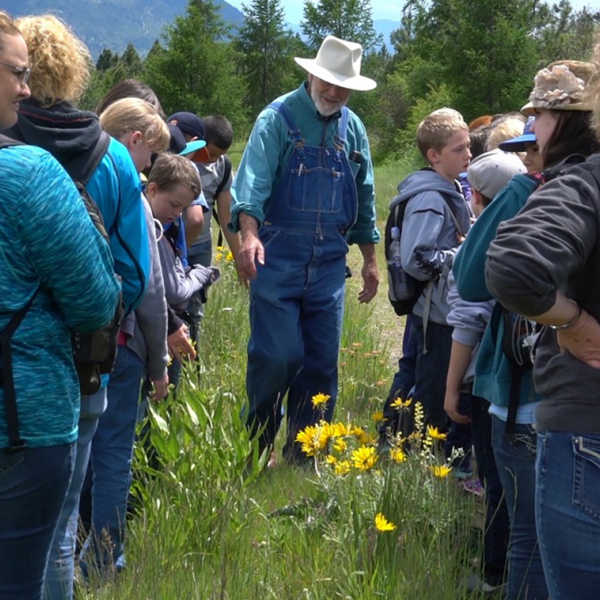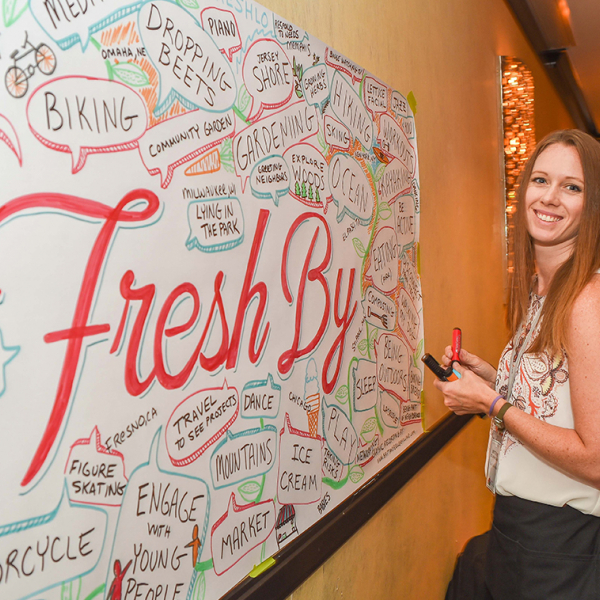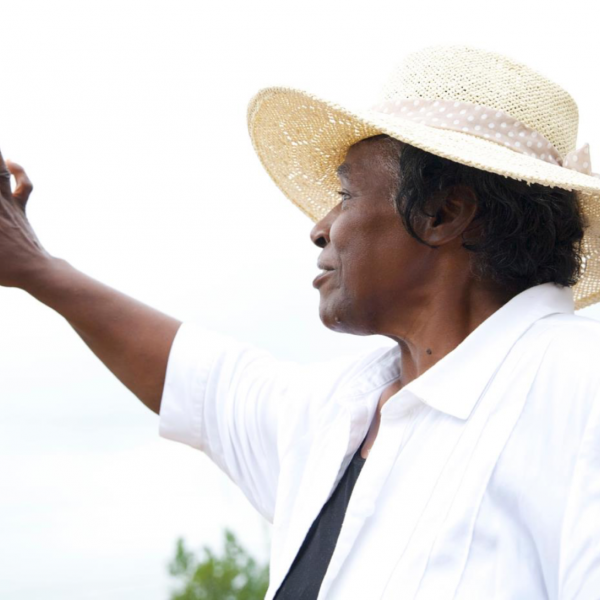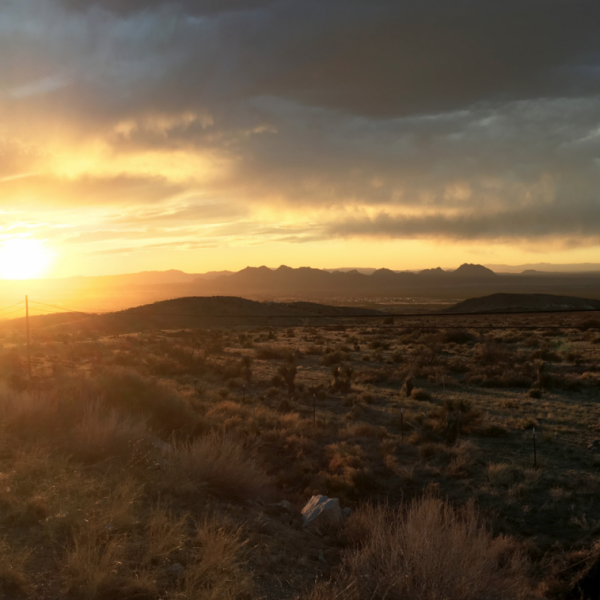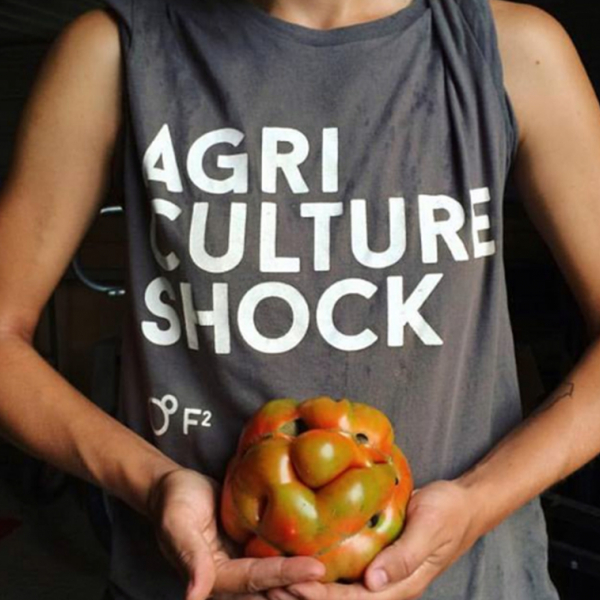In Hindman, KY, the Appalachian Artisan Center will be expanding work with youth and adults to address the community’s opioid epidemic through workforce programs in traditional craft and music. These programs will also contribute to an increase in economic opportunity through the creation of jobs to meet an increasing demand for handcrafted instruments in the region. This project is partnering with a rare luthiery studio as one of several education and workforce partners.
19.12.17
Artist Andrew Cozzens’ sculpture Smoketown Life|Line Project uses vertical metal rods to represent the “lifelines” of residents in Louisville, Kentucky’s Smoketown neighborhood. The height of the rod represents the age of each individual. The rods are sized, bent, and banded with different colors to indicate timelines and the types of trauma they’ve experienced throughout their lives: things like incarceration, addiction, and mental illness. Individually, each rod tells a unique story about one person’s growth through numerous obstacles.
14.12.17
For the last eleven years, Luis Ortega (Storytellers for Change) has worked with organizations, school districts, foundations, and universities to help them apply a story-centered approach to tackle complex social challenges. And that’s just what he did at the ArtPlace Summit during his Storytellers Breakout session. Why is storytelling important? How can it help, say, an organization acquire funding? How can it help a project at all?
12.12.17
Last month our friends at the National Endowment for the Arts released a new research report. "Rural Arts, Design, & Innovation in America" highlights the impact of the arts in rural communities. The report notes that until now, arts and economic impact theories have been built and tested only in urban environments. NEA Director of Research & Analysis Sunil Iyengar said, “We’ve long understood that the arts and design can beautify a place and attract new residents and businesses. This report is unique in showing these attributes as closely linked to innovative business practices in rural communities nationwide.”
05.12.17
Today, we are proud to announce the 23 creative placemaking projects that will receive funding in communities of all sizes across 18 states and one US territory. ArtPlace has a deep commitment to funding in rural America, with almost 52% of this year’s funded projects working in rural communities. Our National Creative Placemaking Fund has invested in communities across the country in which artists, arts organizations, and arts and culture activity help drive community development change across 10 sectors of community planning and development.
29.11.17
In July of 2015, I was approached by Perry Stokes of Libraries of Eastern Oregon, and the Director of the Baker County Library District, about an arts program that was being funded through ArtPlace America. My first question was not about the program, but about the budget. Most of you in the library world know too much about having to make miracles happen with little or no money, and as a full-time artist and part time event organizer I wasn’t interested in adding another volunteer job to my plate at the time. However, anything arts related peaks my interest and so I wanted to know more.
29.11.17
Over the past 18 months, two Kresge Foundation teams have been working with neighborhood-based coalitions to ensure that residents have access to healthy foods and economic opportunity. We’re tackling this through an $11 million-dollar initiative Fresh, Local and Equitable – or as we call it, “FreshLo.” FreshLo envisions strengthening low-income communities by integrating Creative Placemaking and food-oriented development.
28.11.17
Over the past several years, Chicago has been highlighted in the media as a ‘tale of two cities’: one of them safe and prosperous, the other dangerous and poor—and both of them growing more so. Nowhere in Chicago are the crises more prevalent and the social exclusion and marginalization more profound than on the South and West Sides. After generations of disinvestment, these communities are buckling under the weight of a complicated and interconnected layering of crises of a failing economy, collapsing infrastructure and urban decay, environmental degradation, seemingly perpetual cycles of increasing violent crimes, epidemics of preventable chronic diseases, and an ever-increasing food insecurity.
27.11.17
As we continue focusing on the intersection of food, agriculture and creative placemaking on the blog this month, we thought it would be a great time to check back in with two of our amazing grantees currently working in this field. The MESA Project in Las Cruces, NM and the Opa-locka Community Development Corporation’s THRIVE Campus project in Opa-locka, FL are both doing incredible work in their communities using food and agriculture to bridge cultural gaps, improve the local economy, cope with environmental and public heath crises, and more.
21.11.17
Wormfarm has just completed its 7th annual Fermentation Fest- A Live Culture Convergence. This project began with support from both NEA Our Town as well as ArtPlace America in their initial year of funding. This was an exciting time for us and it propelled our work from modest offerings by an idiosyncratic founder-led organization that only two years earlier had an annual budget of about 30K to one that had an ambitious dream realized along with the attention (& scrutiny) of local, state and national colleagues and a budget more than 10x larger.






